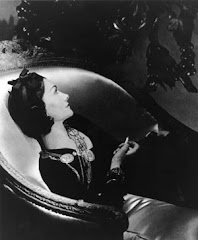This is a piece I did for the Telegraph on the new jewellery gallery which is about to open at the V&A. I'm going to the private view next week - champagne, canapes and staring at tiaras. And where are you now, moths?
Chadour-Sampson takes out what looks like an ordinary plastic bag (though it's conservation-grade plastic) and opens it to reveal an emerald and diamond necklace and earrings: the Beauharnais emeralds, given by Napoleon to his adopted daughter, Stéphanie de Beauharnais, on her marriage in 1806 to the heir to the Grand Duke of Baden, and probably made by Nitot & Fils of Paris. It was about this time that jewellers began to develop open-back settings, which allowed more light through the stones. The simplicity of the setting, the square-cut and pendant emeralds surrounded by diamonds and connected by chains of diamonds and emeralds, must have been an early form of minimalism. Clasping it to my neck, I regret that I am not fit enough to make a run for it down the stone steps.
Cameos (the Victorian equivalent of keeping a picture of your loved one on your mobile phone), lockets containing strands of your nearest and dearest's hair (dead or alive) and jet mourning jewellery were all characteristics of 19th-century decorative jewellery, though it still incorporated religious motifs such as crosses. By the 1860s the trade had been transformed by mechanisation. Jewellery went mass-market with gold-plated base metals and machine-made chains, and was now worn by all classes. Inevitably, the simplicity of great - and easily copied - sets like the Beauharnais emeralds had to give way to jewels as works of art in themselves, such as a spectacular art-nouveau orchid of gold enamel, rubies and diamonds, designed to be worn in the hair, which has the slightly sinister fin-de-siècle decadence of the symbolist painters. At the turn of the last century the tiara became a fashion item, and no longer the preserve of royalty and aristocracy. Cartier was the leader in the making of tiaras, such as the piece made for Alexandra Comnène for her marriage in 1913 to Robert Everts, a diplomat, with cabochon rubies - early examples of synthetic stones, supplied by Comnène herself

